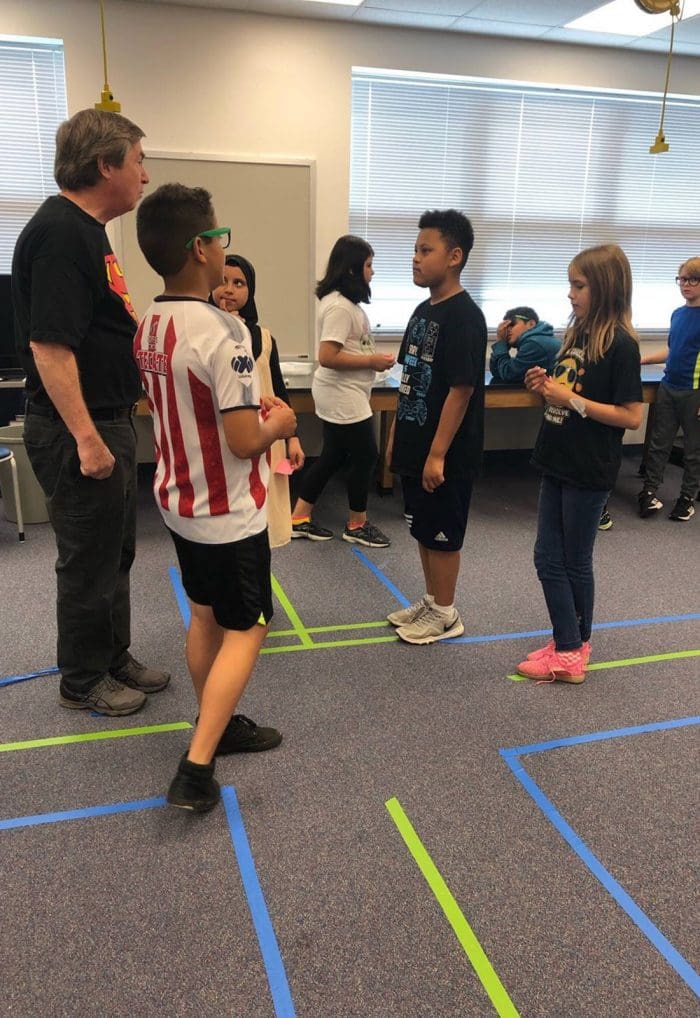June 19, 2019
Although children growing up in today’s world are both reliant on and proficient with technology, low enrollment and high attrition rates in Science, Technology, Engineering, and Mathematics (STEM) subjects are major challenges in higher education, and a shortage of candidates with STEM skills is projected to increase. Professionals in STEM-related careers have an important role to play in connecting with students to bridge the gap and introduce the wide range of career possibilities that exist in science and engineering fields.
One individual that carries thi s interest is Kittelson & Associates’ Senior Principal Engineer Joe Toole. Joe’s career in the transportation profession – coming up on 40 years – has included serving as the Federal Highway Administration (FHWA)’s acting executive director, director of FHWA’s Office of Technology Applications, and deputy regional administrator for the Mid-Atlantic states. Among other notable recognitions, these accomplishments led to Joe receiving the Presidential Rank Award for Meritorious Service in 2009. Prior to retiring from FHWA, Joe began participating in the National Organization for Youth Safety (NOYS) and developed a passion for teaching traffic and transportation safety to young people.
s interest is Kittelson & Associates’ Senior Principal Engineer Joe Toole. Joe’s career in the transportation profession – coming up on 40 years – has included serving as the Federal Highway Administration (FHWA)’s acting executive director, director of FHWA’s Office of Technology Applications, and deputy regional administrator for the Mid-Atlantic states. Among other notable recognitions, these accomplishments led to Joe receiving the Presidential Rank Award for Meritorious Service in 2009. Prior to retiring from FHWA, Joe began participating in the National Organization for Youth Safety (NOYS) and developed a passion for teaching traffic and transportation safety to young people.
“Years ago I worked on a White House initiative on STEM careers. One of the studies we saw showed that fourth and fifth grade are critical decision points regarding STEM for young people,” says Joe. “If a child at that age is told or for some reason decides “Ëœmath is too hard,’ “Ëœgirls don’t become engineers’ or “Ëœscience is boring,’ there is a good chance they will never choose a STEM path. The key is to reach them at that age and make sure the door stays open.”
Earlier this month, Joe had the chance to connect with 4th graders at Belmont Elementary School in Virginia to engage them in transportation problem solving to get them excited about STEM. Acting as cars, the students tested out several intersection design scenarios: How does the intersection work with just stop signs? How does the flow of traffic change when there’s a signal? How about a roundabout? The students timed how long it took the “cars” to get through the intersection and how many crashes would likely occur in each scenario.
Joe then took the students into the future to discuss how things will change with the introduction of driverless cars. With just straws and clay, he presented them with the challenge to create a tall antenna to help the driverless cars communicate with one another – and as you can see in the photos, the students were very creative!
"Transportation problems are something every student can understand. What they learn about safety in particular is something they can apply as soon as they walk out the door."
- Joe Toole, Senior Principal Engineer, Kittelson
We love seeing the varied ways Kittelson staff bring their knowledge and passion outside the transportation profession and into the “real world,” particularly the next generation of students who will be tomorrow’s engineers and planners. Joe echoes the opinion of many of our staff who get involved in the classroom: “Ultimately, I find I learn as much from them as I hope they take from me.” Keep on doing what you’re doing, Joe!
